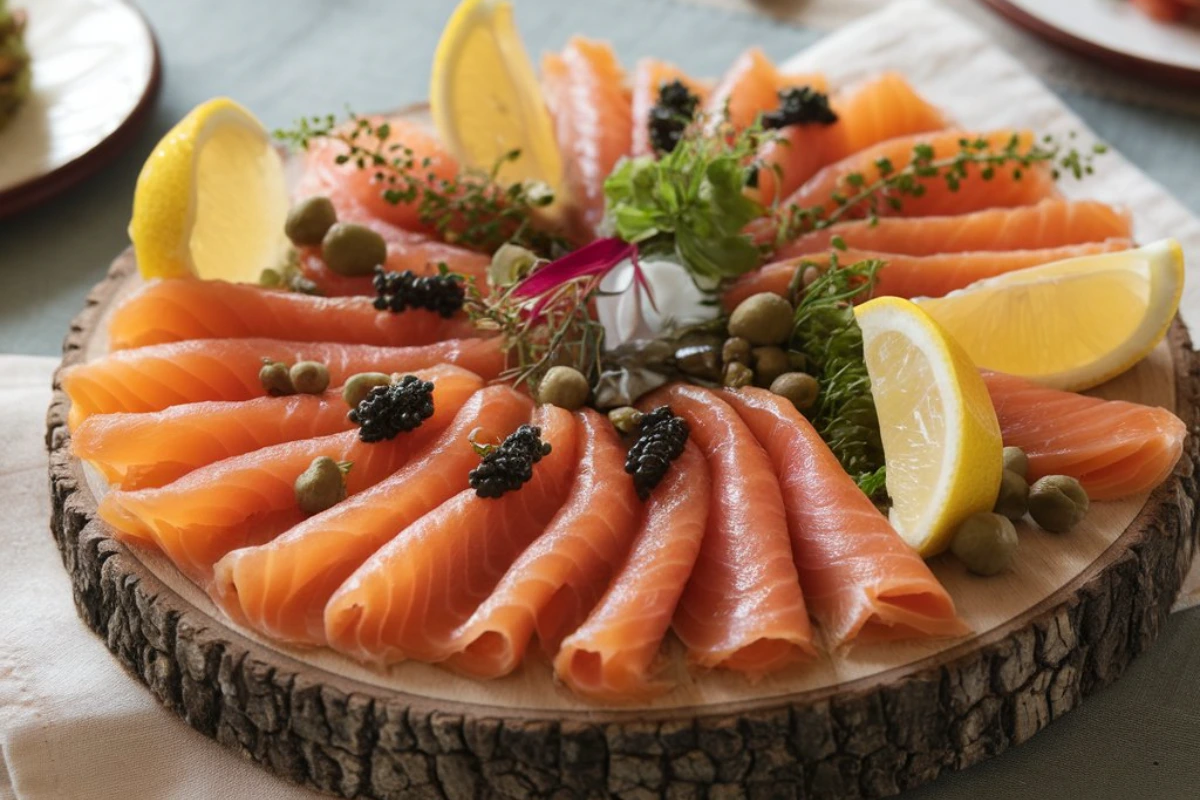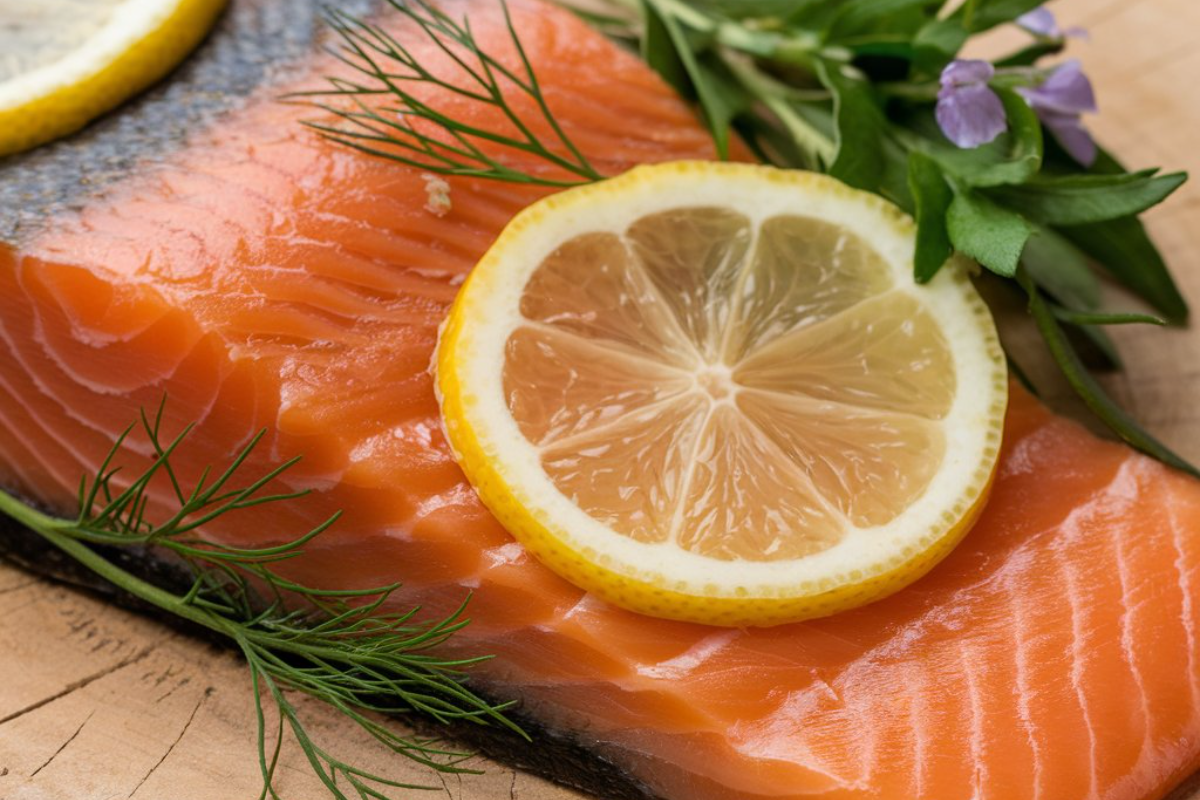Why Is Smoked Salmon So Expensive? An In-Depth Exploration
Smoked salmon is known for its luxurious taste, smooth texture, and impressive nutritional benefits. However, when you see its price tag, you can’t help but wonder, “Why is smoked salmon so expensive?” Several factors, including production methods, sustainability measures, species selection, and growing market demand, drive up the price. This guide will explore the various aspects that make smoked salmon such a pricey yet cherished item, helping you understand the value behind each slice.
The Journey from Ocean to Plate: Why Smoked Salmon Costs So Much
The High Costs of Salmon Farming and Wild Fishing
The cost of smoked salmon begins with farming or fishing the salmon itself. Farming requires producers to replicate the salmon’s natural habitat in large, controlled environments, usually located in cold-water regions like Norway, Scotland, and Alaska. These farms ensure that water quality remains pristine and the fish are fed a nutritious diet. However, maintaining these farms is expensive. Salmon farming involves monitoring water conditions, preventing diseases, and protecting the fish from predators. All of this requires specialized equipment and labor, which adds to the overall production costs.
Wild-caught salmon, while highly prized, comes with even higher expenses. Fishermen must venture far from shore into remote waters during short fishing seasons to capture wild salmon. This process is labor-intensive, time-sensitive, and subject to unpredictable conditions, such as weather and fish availability. The added difficulties of catching wild salmon explain why it often costs more than farmed varieties. Read more about the challenges faced in fish farming here.
How Different Salmon Species Affect Smoked Salmon Prices

The species of salmon used for smoking also plays a significant role in determining its price. Different species offer distinct flavors, textures, and appearances, which contribute to the overall cost. King (Chinook), Sockeye, and Atlantic salmon are among the most popular and expensive species used in smoked salmon production.
King salmon, often regarded as the most luxurious variety, boasts a rich, buttery flavor and higher fat content. This species is more challenging to farm and even harder to catch in the wild due to its size and natural habits. Consequently, smoked King salmon carries one of the highest price tags.
Sockeye salmon, known for its brilliant red flesh and bold flavor, is another highly sought-after species. It thrives in the cold, pristine waters of the Pacific, which helps it develop its firm texture and deep flavor. Due to its limited availability and its reputation for being a premium product, Sockeye salmon also commands a higher price in the smoked salmon market.
The Smoking Process: A Key Contributor to the High Price of Smoked Salmon
Traditional Smoking Methods and Their Costs
The smoking process plays a major role in determining the final price of smoked salmon. Smoking salmon involves curing the fish in a mixture of salt and sometimes sugar. This curing process draws out moisture, enhances flavor, and preserves the fish. Once cured, the salmon is smoked over wood chips, such as alder, oak, or applewood, to infuse it with a rich, smoky taste.
Smoking salmon isn’t a quick process. Producers may use hot or cold smoking techniques, each requiring skill and patience. For a deeper understanding of artisanal smoking methods and why they’re expensive, check out this source.
Artisanal Methods and Premium Ingredients Drive Costs Higher
Producers who use artisanal methods often hand-prepare each fillet, adding a level of craftsmanship to the process. Each step, from filleting to curing and smoking, receives close attention, ensuring the highest possible quality. These small-batch producers typically rely on traditional techniques passed down through generations, focusing on producing smoked salmon that captures the perfect balance of flavor, texture, and appearance.
In addition to artisanal methods, premium ingredients also play a role in driving up costs. High-quality salts, spices, and even the choice of wood chips all contribute to the flavor and overall complexity of the finished product. Much like luxury seafood dishes like crab brulee recipes, smoked salmon benefits from the careful selection of ingredients that enhance the natural richness of the fish. Consumers who seek out smoked salmon crafted with these premium ingredients are willing to pay a higher price for what they perceive as a superior culinary experience.
Sustainability and Environmental Concerns: Why Sustainably Sourced Smoked Salmon Costs More
Sustainable Farming Practices Add to the Cost
Sustainability has become increasingly important for both consumers and producers in the smoked salmon industry. To reduce the impact on marine ecosystems, many farms have adopted sustainable practices. These measures include reducing waste, minimizing disease outbreaks, and using fewer resources. While these practices are environmentally responsible, they also add to the production costs.
Farms that focus on sustainable practices tend to operate at lower fish densities to avoid overcrowding, which can lead to disease and environmental degradation. These lower densities mean fewer fish are available, which limits the supply and pushes up prices. Additionally, sustainable farms must often comply with stricter regulations, invest in eco-friendly technologies, and use certified feed sources, all of which increase costs. Explore the impact of sustainable seafood practices here.
Climate Change and Its Impact on the Price of Smoked Salmon
Climate change is another factor that contributes to the rising cost of smoked salmon. Warming oceans and changing weather patterns have negatively impacted the habitats of wild salmon, leading to reduced catches and smaller populations. This reduced availability of wild salmon increases its price, as demand continues to outstrip supply.
Additionally, climate change has forced farmers to adjust their operations. Rising sea temperatures and changing ocean currents make it more difficult to maintain optimal conditions for farming salmon. Farmers must invest in better technology and adapt their practices to keep their operations sustainable, which drives up costs and, in turn, the price of smoked salmon. For more on how climate change affects the fishing industry, you can read this analysis.
Labor, Expertise, and Packaging: Hidden Costs Behind the High Price of Smoked Salmon

Skilled Labor and Expertise Ensure High-Quality Smoked Salmon
The production of smoked salmon requires skilled labor at every stage. Farmers and fishermen must ensure the fish are harvested at the right time to ensure optimal quality. The smoking process itself is an art form that demands careful attention. Artisanal producers, in particular, rely on experienced workers who know how to balance the curing process, control the smoking temperature, and select the best ingredients to bring out the natural flavors of the fish.
This reliance on highly skilled labor makes the production of smoked salmon more expensive. Artisan producers who use small-batch methods charge more for their product because of the time, effort, and expertise required. Consumers who seek out high-quality, artisanal smoked salmon are often willing to pay a premium for the craftsmanship and attention to detail that go into each batch.
Packaging and Transportation Add to the Cost
After the fish is smoked, proper packaging is essential to maintain freshness and flavor. Producers often use vacuum-sealed packaging, which prevents contamination and extends the shelf life of the product. This specialized packaging adds to the overall production cost.
Additionally, transporting smoked salmon requires cold storage to keep the fish fresh, whether it’s being shipped locally or internationally. Refrigerated trucks, freezers, and other transportation logistics add to the cost of delivering smoked salmon to markets worldwide. To explore more about smoked salmon’s culinary uses, check this page on cooking salmon at home here.
Market Demand
Increasing Popularity and Limited Supply Drive Prices Higher
Smoked salmon continues to grow in popularity as more consumers seek out healthy and gourmet food options. Its high nutritional value, including omega-3 fatty acids and lean protein, appeals to health-conscious buyers, while its rich flavor and versatility make it a favorite in gourmet kitchens. Understanding how fish farming affects sustainability could deepen your appreciation for these practices.
The combination of high demand and limited supply explains the rising cost. As more people enjoy smoked salmon, whether as a luxurious breakfast option or a fine dining ingredient, prices increase, especially for premium, sustainably sourced varieties. In regions where smoked salmon is considered a luxury, demand pushes the price even higher, ensuring its status as a delicacy.
Conclusion
Why is smoked salmon so expensive? The answer lies in the intricacies of the production process, the use of skilled labor, the impact of sustainability practices, and increasing market demand. From the challenges of farming or fishing to the craftsmanship involved in the smoking process, every step adds to the final price. However, for those who appreciate the rich flavor, smooth texture, and nutritional benefits, smoked salmon remains a worthy investment.
The journey of smoked salmon from ocean to plate highlights its value as a luxury item, one that offers far more than just taste. It represents quality, environmental consciousness, and tradition, making it a food many are happy to pay a premium for.

